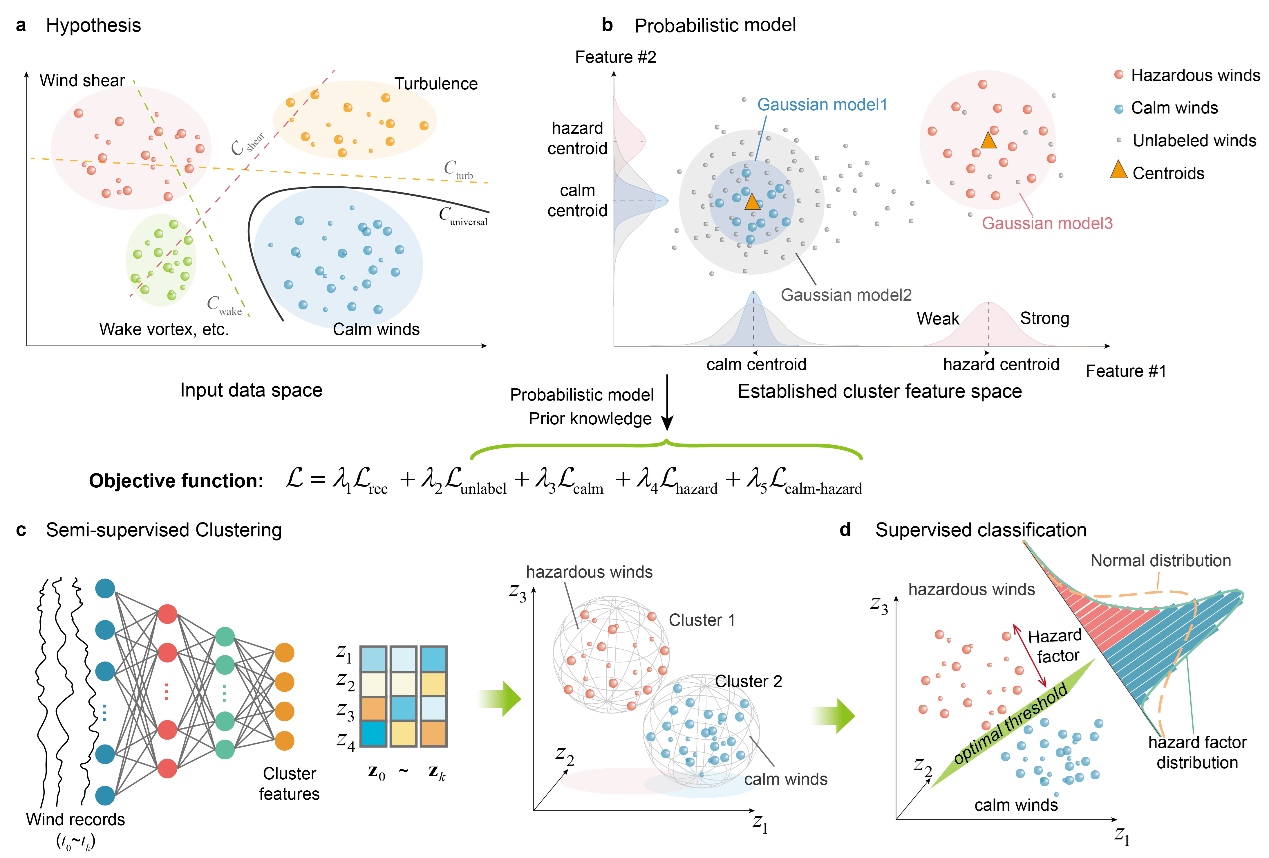Wind, as a common natural phenomenon, is closely related to people's productivity, daily routines, and military activities. Complex winds, such as aircraft wake turbulence and wind shear, have caused over 40% of aviation incidents. They are recognized as the "invisible killer" in the air traffic management. Similarly, the takeoff and landing of carrier-based aircraft are referred to as "dancing on the razor’s edge" due to the impact of complex winds and some other factors.
Induced by local topography, surface roughness, and thermodynamics, hazardous winds often involve multi-scale and chaotic dynamics. Moreover, its complex coupling with the aerodynamic characteristics of aircraft makes it challenging for hazardous winds to be universally identified. Existing hazardous wind detection standards are often customized for different types of hazardous winds (such as wind shear, turbulence, aircraft wake turbulence, etc.), geographical locations, and meteorological conditions. The standards, similar to a set of rulers tailored for distinct wind types, exhibit limited effectiveness and generalization ability, which may lead to false alarms or missing detection in practice. Therefore, there remains a long-standing challenge to find a precise ‘ruler’ for the universal detection of various hazardous winds in the field of aviation safety.

Schematic diagram of the interpretable semi-supervised clustering-based method for the comprehensive assessment of aviation hazardous winds.
In response to this challenge, Professor Jianbing Li with his team from the College of Electronic Science and Technology at National University of Defense Technology (NUDT) have pioneered to propose an interpretable semi-supervised clustering-based method to comprehensively assess low-altitude hazardous winds. Their study provides foundational theoretical support to enhance aviation safety. Based on the essence that aviation hazards are induced by the spatial non-uniformity of winds, they have developed an interpretable semi-supervised clustering method which integrates physical prior knowledge with probabilistic models for the comprehensive assessment of aviation hazardous winds. With a large amount of lidar observations and very limited labeled data, they have successfully extracted the universal high-dimensional features of hazardous winds. This breakthrough has led to a high-confidence identification and quantification of various hazardous winds for the first time.
The research findings, titled "Interpretable semi-supervised clustering enables universal detection and intensity assessment of diverse aviation hazardous winds", have been published in Nature Communications. The link to the paper is: https://www.nature.com/articles/s41467-024-51597-y. The College of Electronic Science and Technology at NUDT is the first affiliation listed for the paper. The first author of the paper is Gao Hang, a Ph.D. student from the College of Electronic Science and Technology. Professor Jianbing Li is the sole corresponding author.





